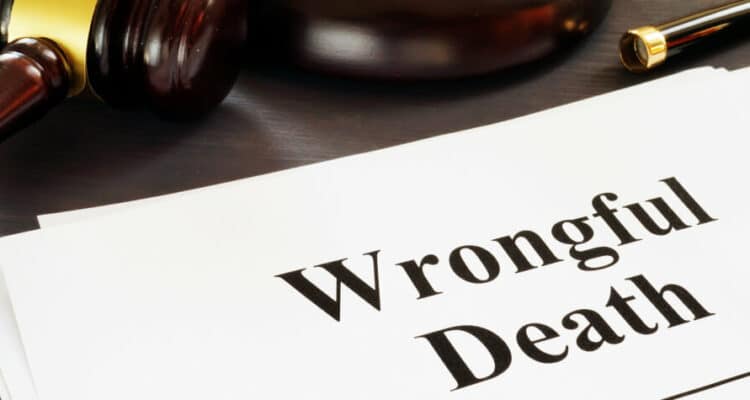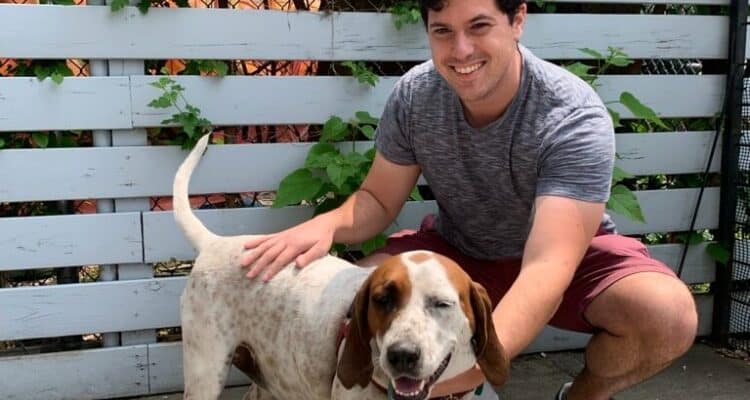A train accident is one of the most frightening things a person can experience. History has taught Americans that train accidents can happen in any place at any time. Oftentimes, people do not think about train accidents in Colorado. In the event you were injured in a Colorado train accident, there are several tips the personal injury attorneys at Bowman Law would like to share. This post aims to shed light on how you may be able to recover after being injured in a train accident.
Types of Train Accidents
Train accidents can take various forms, each presenting its own set of risks and challenges. The following are common types of events which can lead to serious injuries:
- Derailments – These occur when the train comes off the tracks. This is the most common type of train accident.
- Collisions – These are terrifying accidents that are often due to operator error or negligence. Even low-speed collisions may cause serious injuries.
- Slip and Falls – Passengers can fall and get injured when a train stops suddenly. In addition, debris, liquid, or other substances in the train’s walkways may contribute to slip and falls.
- Train Crossing Accidents – You can get injured even if you are not a passenger. Tragically, many people are struck by trains at crossings. These may be caused by many things, including faulty guardrails or operator error. Train crossing accidents can affect both pedestrians and drivers.
- Health Concerns: Depending on the cargo onboard a train, the fallout of an accident can contain significant health risks for the surrounding area. All sorts of items are transported on trains, including hazardous materials. If one of these trains is involved in an accident, these materials can spill into the environment or air, causing long-term health effects for local communities.
Recent Train Accidents in the United States
Train accidents are unfortunately too common in our country. Below are just a few of the many recent notable train accidents in the United States.
- Loveland, Colorado
On February 7, 2024 a train derailed in Loveland, Colorado along the Great Western Rail Line. The freight train, which was primarily hauling sugar, came off the tracks and was punctured in the derailment. This caused hundreds of gallons of diesel fuel to spill out, prompting a hazmat team to respond. Thankfully, the team contained the spill, preventing fuel from reaching local waterways.
On January 29, 2024, an Amtrak train hit a semi-truck that was obstructing the tracks near Keenesburg, Colorado. The collision caused the train to derail. The train’s engineer was hospitalized with life-threatening injuries. The truck, owned by Dairy Farmers of America was transporting milk. Investigations remain ongoing, but at this point it is unclear why the truck was stopped on the tracks.
Residents have expressed concern increasing vehicle traffic in the area has necessitated improving the railroad crossing. While the area is still considered rural, locals wonder if officials need to take further safety precautions due to rising traffic volume.
- Rockcastle County, Kentucky
Residents near the site of a November 2023 Kentucky derailment have filed suit against railroad company CSX. Two CSX train cars carrying molten sulfur derailed and spilled the chemical. The cars caught fire and released toxic levels of sulfur dioxide. Over 100 people evacuated due to the dangerous situation.
Locals in the nearby town of Livingston, Kentucky were exposed to the substances, prompting lawsuits. The residents claim CSX was negligent in exposing them to hazardous chemicals that have been proven to cause long-term health issues. The suits also state residents suffered chemical irritation in their eyes, mouths, lips, and throats. CSX’s alleged negligence stems from the train’s trackside detectors malfunctioned or were not properly monitored. These detectors are designed to alert crew when the wheels reach abnormally high temperatures.
On October 15, 2023, a BNSF coal train derailed near Pueblo, killing one person. The tragic derailment occurred on a railroad bridge that traveled above Interstate 25. The bridge collapsed and six train cars fell onto the interstate, with at least one of them striking a semi-truck. The driver of the truck, a father of six and a grandfather to 15, was killed in the accident.
The National Transportation Safety Board (NTSB) determined a broken rail caused the derailment. The accident prompted federal investigators to look into why warning systems designed to alert crew members to dangerous rail conditions did not function properly. Investigators planned to examine the adequacy of track inspections, track maintenance oversight, and infrastructure quality.
Two children, ages 9 and 12, were struck and killed by an Amtrak train in April 2023. The children allegedly had been crossing the tracks after crawling through a hole in a fence. The children’s parents contended Amtrak had constructed the fence. The parents have brought a lawsuit, claiming Amtrak is negligent for failing to fix the hole. The suit alleges Amtrak knew or should have known a well-maintained fence was necessary to prevent trespassing and a lack of sufficient fencing would pose an unreasonable risk of death or serious injury.
In March 2023, a freight train derailed near the small town of Raymond, Minnesota. The BNSF Railway train was carrying various materials, including ethanol, a highly flammable substance. Four of the 23 derailed cars caught on fire.
Nearby residents evacuated to nearby towns, with the burning ethanol causing health concerns. State and federal responders arrived at the scene to contain the fire. A federal investigation determined a broken rail was the main cause of the derailment, stating “track-train dynamics worsened a rail head surface condition until a complete sectional break out of the rail head occurred.”
A train derailment occurred on February 3, 2023, in East Palestine, Ohio. The incident garnered national attention when a freight train carrying hazardous materials derailed. The derailment created immediate danger, as many freight cars were at risk of exploding. Nearby residents were ordered to evacuate or “face the possibility of death.” When emergency responders arrived, they decided to commenced a controlled burn of the cars and materials, a tactic known as “vent and burn.”
The decision to “vent and burn” has come under heavy scrutiny. Some experts maintain the controlled burn was not only unnecessary but also harmful. Now, the railroad company carrying the materials, Norfolk Southern, are facing a $500 million lawsuit filed by local business, in addition to other legal battles. Residents also continue to face health problems since the derailment, and fears of long-term effects to the surrounding air and water supply continue to permeate the community.
In June 2022, an Amtrak train struck a dump truck on the tracks near Mendon, Missouri. Four people were killed and over 150 were injured. Many victims suffered life-altering injuries.
Many parties have filed lawsuits against, Amtrak, BNSF Railway company and the construction company that owned the dump truck, MS Contracting LLC. Plaintiffs include the truck driver’s widow, families of the deceased victims, and surviving passengers.
An Amtrak train derailed near Joplin, Montana in September 2021. Several passengers were ejected from the train, breaking through the train’s windows. Many of the train cars tipped over, forcing terrified passengers to exit through the windows and climb to the top of train cars. The stretch of track where the tragedy occurred is owned by railway giant, BNSF. Three people were killed and 49 were injured.
Investigations determined there were poor track conditions which should have been flagged by BNSF inspectors. Issues that NTSB indicated BNSF should have noticed included a worn rail, vertical track deflection, misalignment, and rail bed instability. NTSB also discovered a particular inspector’s heavy workload prevented him from doing a timely walking inspection before the accident. That inspector had work an average of 13 hours per day in the weeks leading up to the derailment.
Investigators also concluded passengers’ injuries were made worse due to Amtrak’s lack of seatbelts and windows that were not strong enough to prevent passengers from being ejected during the derailment. Several passengers have initiated lawsuits against BSNF and Amtrak.
During morning rush hour, a New Jersey Transit passenger train slammed into the busy Hoboken Terminal. The September 2016 crash killed one person and injured over 100 others. Many of the victims were standing on the platform when the train failed to slow down as it approached the station. The chaotic scene resulted in extreme disruption of the nation’s busiest transit hub.
A federal investigation determined the accident was likely caused by “engineer fatigue” due to undiagnosed sleep apnea. The National Transportation Safety Board further blamed the accident on:
- New Jersey Transit’s failure to adequately screen and treat employees for sleep apnea.
- The Federal Railroad Administration’s refusal to impose rules requiring testing for sleep apnea.
- Absence of technology that would automatically stop trains.
The deceased woman’s family joined a lawsuit with four of the surviving victims. In June 2021, the lawsuit settled, with New Jersey Transit paying out $8.15 million to the plaintiffs.
The Causes of Train Accidents
Several different factors can cause train accidents. A thorough investigation should uncover what contributed to an accident and shed light on what parties may be liable for injuries. Some common causes of train accidents include:
- Human Error: Lots of people contribute to train operations, including conductors, engineers, dispatchers, and railroad crew. Miscommunication or improper training may lead to signaling errors, for instance. Distracted operators looking at their phones or engineers who have fallen asleep have also contributed to recent train accidents.
- Mechanical Failures: Trains are massive, comprehensive machines. Trains consist of numerous sophisticated materials, including axles, boilers, and brake sets. There are also therefore, many potential manufacturers and companies that contribute to train construction. Infrastructure, like tracks, tunnels, and bridges are also part of routine train operation. It is often necessary for construction crews to improve these. Faulty equipment or improper maintenance of these items can be the main cause of serious train accidents.
- Inadequate Safety Technology and Regulation: The National Transportation Safety Board has recommended railroad companies install more automatic monitoring systems that could detect faulty track conditions. With many of the country’s railroad tracks owned by private railroad companies, many are hesitant to shell out the funds needed to overhaul the safety of their tracks. Lack of standards and safety regulations further lead to inconsistencies in railroad track safety.
Aftermath of a Train Accident
The immediate moments after a train accident can be shocking and confusing. You may be feeling overwhelmed and not know where to go next. The following are basic steps you should take after the accident:
- Seek Medical Attention: Even if you feel your injuries are minor, it is imperative to have a doctor examine you after a train accident. Ignoring even small discomforts can lead to long-term or permanent issues.
- Documentation: Document everything you can after the accident. Take pictures of your injuries and note any train employees at the scene. Try to record conversations with employees if possible. As soon as possible, retrieve all police reports and documents related to the accident. An experienced personal injury lawyer can help you gather pertinent information after the accident.
- File a Claim with an Insurance Company: This is often not straightforward. Identifying relevant insurance information can be an arduous and complicated process. An experienced personal injury lawyer will help you track down all applicable parties and insurance policies. Identifying all possible sources of recovery is crucial to getting properly compensated for your injuries, lost wages, and pain and suffering. As explained in the next session, there can be a variety of different entities responsible for trains accident.
Liability in Train Accidents
Train accidents can be caused by various factors, train operators’ negligence, faulty equipment, or inadequate maintenance of tracks. Determining liability starts with identifying all the possible parties responsible. These may include the train company, equipment manufacturers, or government entities overseeing track maintenance. A knowledgeable personal injury lawyer can conduct a thorough investigation to identify all liable parties that contributed to the train accident.
Railroad companies have a duty to passengers to maintain safe conditions. If a train employee directly causes the accident, the railroad company likely can be held liable for your injuries. The railroad company can be liable for operator error if it is determined it failed to properly train or monitor its employees
In addition, train operators may be held liable. Operators are responsible for monitoring the train’s speed and other variables. They must also monitor mechanical issues and document any problems. If one of these factors causes the accident, an operator may be liable as well.
If poor track maintenance causes an accident, you must determine which company owns the particular section of the track where the accident occurred. As in many of the recent accidents discussed in this post, private rail companies often own sections of track. It is also possible a particular stretch of track can be owned by the federal, state or local government. An experienced personal injury lawyer will determine which company or party was responsible for maintenance of the particular track section.
Proving liability in train accidents requires a thorough investigation and gathering of evidence. Eyewitness testimony, expert analysis of the accident scene, and documentation of safety violations can all play crucial roles in establishing negligence. The Colorado Department of Transportation (CDOT) will also likely conduct their own investigation Specifically, you will have to established:
- You were owed a duty of care.
- Another party breached that duty of care.
- You suffered injuries and damages as a result.
Most train accidents are not straightforward. They involve thorough investigations and due diligence. It is imperative to identify all relevant parties early on to ensure a favorable outcome of your case. An experienced personal injury lawyer can help passengers navigate this process and build a strong case for liability.
Recoverable Damages in Train Accidents
Most injured persons may file a personal injury lawsuit. However, if you are a train worker, you may only file a lawsuit under the Federal Employers Liability Act.
A train accident plaintiff in a personal injury lawsuit may recover compensation for:
- Medical bills.
- Lost wages, including past, present or future wages.
- Property Damage
- Pain and Suffering
- Disfigurement
- Disability
Unfortunately, there are potential limits to recovery. Colorado allows juries to award punitive damages for “reckless conduct.” However, these damages are capped at equal to the amount of actual damages awarded. If, for instance, a jury awards you $100,000.00 for medical damages and $300,000.00 in punitive damages, the trial judge will reduce punitive damages to $100,00.00.
In wrongful death cases, the deceased’s spouse or heirs may recover unlimited economic damages. However, the limit on non-economic damages, such as pain and suffering, is limited to $250,000.00.
Limitations in Amtrak Cases
Amtrak is, by far, the most popular long-distance train company in the country. With Amtrak’s popularity, they are also involved in numerous train accidents. If you were injured in an Amtrak accident, you may wonder to what extent you can recover from the behemoth company.
While Amtrak is technically a government entity, it does not enjoy the same protections most others do under the Federal Tort Claims Act. Amtrak is considered a “quasi-public corporation,” meaning it is a for-profit company in which the United States government owns all of its stock. Amtrak, therefore, may still be sued for negligence, similar to private corporations.
In 1997, Congress passed the Amtrak Reform and Accountability Act (ARAA). The Act originally limited Amtrak’s potential payout to train accident victims to $200 million per accident. The cap has since increased to $322,864,288.00. While this number may seem substantial, it is divided amongst every victim in the accident, meaning it is possible it may not be enough to fairly compensate victims of serious accidents with multiple casualties.
However, while Amtrak may be responsible, other parties may also play a role. In addition to Amtrak, possible liable parties include:
- Manufacturers of defective parts and equipment.
- Freight rail companies, like BNSF, are responsible for maintain the tracks.
- Contractors who provide services to Amtrak.
- Construction entities of barriers and crossings.
Train accidents can have devastating consequences for passengers, causing injuries and significant pain and suffering. By understanding liability and compensation options, injured passengers can take proactive steps to protect their rights and seek the compensation they deserve. With the support of experienced personal injury lawyers, they can navigate the complexities of the legal system and work towards obtaining the justice and closure they need to move forward.
If you or loved ones have suffered injuries in a train accident, consult with the experienced personal injury attorneys at Bowman Law firm to ensure you receive the support you need to recover and regain control over your life. Contact us today. Our personal injury lawyers serve Denver, Boulder, Colorado Springs, and Fort Collins and the surrounding areas.


